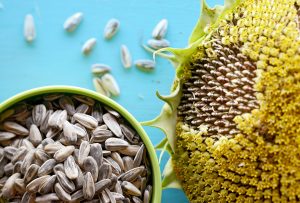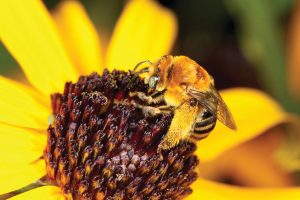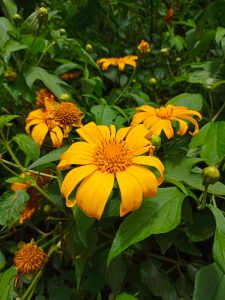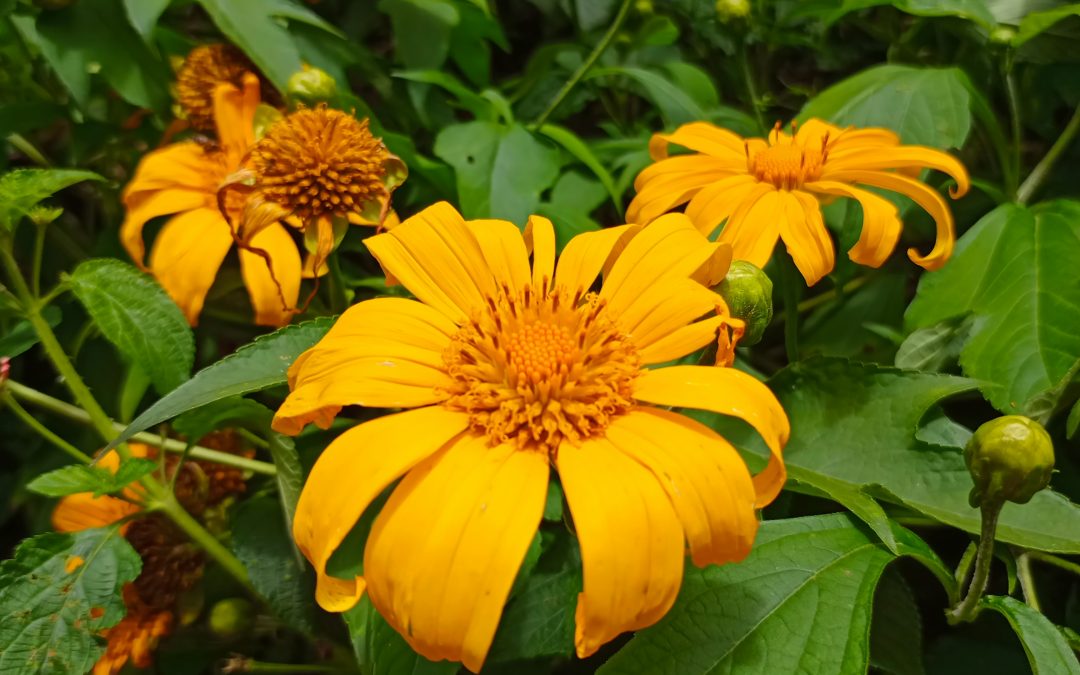When you walk through Kakamega forest, you will not miss the beauty of sunflowers within the forest. Sunflowers are not only a sight to behold they also offer multiple ecosystem services. They grow up to 9 ft tall and produce large flower heads with edible seeds. The seeds produced are a source of food rich in fat and protein, they can be eaten raw or roasted, the seeds are also used for oil extraction.

Sunflower seeds being extracted from the plant
Sunflowers are environmental – friendly and within the forest they are a source of pollen and nectar. They attract birds and insects like butterflies and other pollinators which in turn ensures pollination takes place. Pollination is an essential part of plant reproduction. Pollen from a flower’s anthers (the male part of the plant) rubs or drops onto a pollinator. The pollinator then take this pollen to another flower, where the pollen sticks to the stigma (the female part). The fertilised flower later yields fruit and seeds.

Bee pollinating on sunflower plant
Sunflower plant has taproots which increase the soil quality in the forest. Their taproot system is an added advantage to them as they are tolerant to mild drought making them self sufficient and resilient. Taproot offers better penetration to attract water from the soil in dry climates.
Sunflower can be used as herbal medicine to treat various ailments. During the ancient days, sunflower seeds when pounded used to treat snake and spider bites and when the leaves are boiled, it was used to treat fevers.
The scientific name of sunflower is Helianthus Annus, the term Helianthus is derived from the Greek Helios, meaning sun, and anthos, meaning flower, and from Latin annuus, meaning annual.

Sunflower Plant in Kakamega forest

